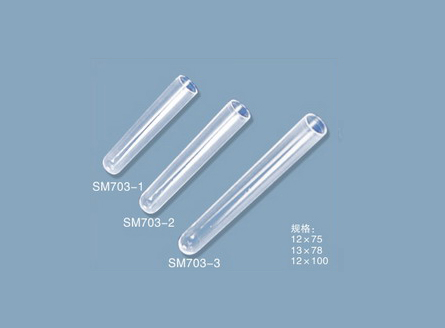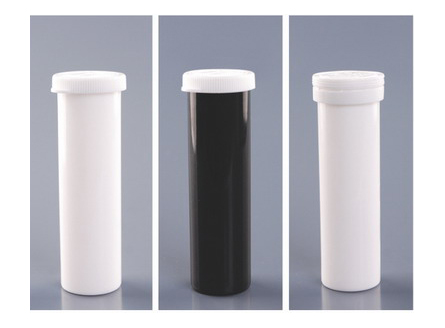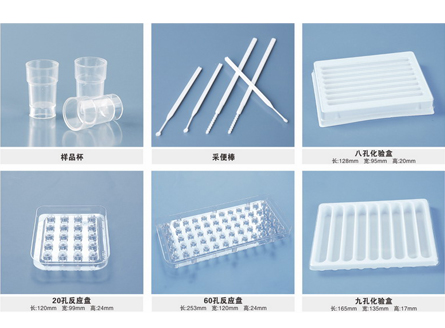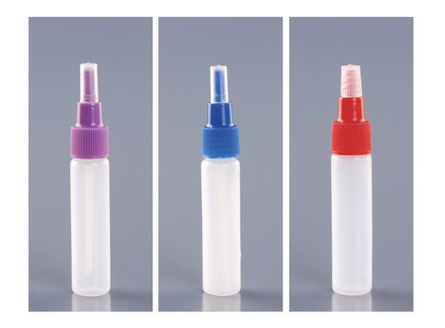
 试管
试管A test tube is a container used to hold a...
 Test paper bucket
Test paper bucketThe test paper barrel and test paper cyli...
 Inspection supplies
Inspection suppliesOur company produces various inspection s...
 FOB fecal collection pipe
FOB fecal collection pipeFOB toilet pipes are mainly made of low-d...
FAX:+86-317-4052076
Email:czycgs@163.com
Web:www.xysjcz.com
Address:Du Sheng Xiang Xiao Liu Village, Cang County, Cangzhou City, Hebei Province
Current Location:HOME > NEWS > Frequently asked questions >
NEWSApplication in the detection of pathogenic microorganisms in aquatic animals
Aeromonas aeruginosa is one of the important pathogens that harm China's freshwater aquaculture industry, which can cause sepsis, enteritis, surface ulcers, and vertical scale disease in aquatic animals. Xin Zhiming prepared three monoclonal antibodies against Aeromonas aeruginosa, and labeled the monoclonal antibody 1F10 with colloidal gold. A colloidal gold immunochromatographic test strip was prepared for the detection of Aeromonas aeruginosa. This method has strong specificity and a detection sensitivity of 1 million CFU/mL. The results show that the time is less than 5 minutes, making it suitable for grassroots production promotion and application. Huang Yidan et al. established an ultra sensitive colloidal gold detection method using highly specific monoclonal antibodies 3F3 and 2C9C3 against Aeromonas aeruginosa, as well as colloidal gold labeling technology, using a dual antibody sandwich method (monoclonal antibody antigen monoclonal antibody). This method can detect live and inactivated bacterial solutions, with a low detection rate of 17100 CFU/mL, high specificity, good reproducibility, fast detection time, simple operation, and intuitive results. It provides a convenient and accurate method for the detection of guinea pig aeromonas disease in aquatic products. Aeromonas sobria is a freshwater bacterium commonly found in various water bodies such as ponds, lakes, and rivers. It is highly prevalent and has a high mortality rate after infection with aquatic animals, posing a serious threat to the aquaculture industry. The colloidal gold test strip established by Liang Minglong for detecting Aeromonas aeruginosa can complete the detection of Aeromonas aeruginosa within 10 minutes, with a small detection limit of 1 million CFU/mL. This detection method is accurate, sensitive, and easy to operate, suitable for non personnel on-site testing. Aeromonas hydrophila is widely distributed in various water bodies in nature and is a primary pathogenic bacterium of various aquatic animals. It is a opportunistic pathogen and a typical zoonotic pathogen that can cause sepsis and human diarrhea in various aquatic animals. Xin Zhiming et al. used colloidal gold with a diameter of 20nm to label the monoclonal antibody 1A5 against Aeromonas hydrophila, and sprayed it as a detection antibody on a gold pad. The monoclonal antibody 1F3 against Aeromonas hydrophila and the sheep anti mouse antibody were used as capture antibodies and sprayed on the T and C lines of nitrocellulose membranes, respectively. They established a colloidal gold test strip for detecting Aeromonas hydrophila and used it to detect simulated samples mixed with inactivated and serum. The test strip showed strong specificity, sensitivity up to 100000 CFU/mL, and detection time was less than 5 minutes, making it suitable for clinical testing in grassroots production lines. Edwardia tarda, also known as Edwardia tarda, is an important pathogenic bacterium in fish, amphibians, and reptiles. The aquatic animals caused by this bacterium are called delayed Edwardian disease, which can cause serious economic losses and is classified as one of the three types of aquatic animal diseases in China. Qin Pu, Hu Xiao, and others prepared a colloidal gold detection test strip for slow Edwardian bacteria and tested its performance. The results showed that the developed test strip had good specificity and no cross reactions were observed in the detection of common or pathogenic bacteria such as Escherichia coli, Staphylococcus aureus, Vibrio anguillarum, Aeromonas hydrophila, and Vibrio harveyi; The sensitivity reaches 100000 CFU/mL, and the reaction time is only 5-10 minutes. It can be used for the detection of ascites caused by delayed infection of Edwardia. It has the characteristics of simple operation, strong specificity, and so on. Xin Zhiming used nano colloidal gold particles to label the monoclonal antibody 3A7 against Edwardia tarda, and used it as a detection antibody. The monoclonal antibody 4F11 against Edwardia tarda and sheep anti mouse antibodies were used as capture antibodies to establish a colloidal gold immunochromatographic detection method for Edwardia tarda. This test strip has a sensitivity of up to 100000 CFU/mL and strong specificity, with a detection time of less than 20 minutes, making it suitable for grassroots production promotion and application. Vibrio harveyi is the main pathogen of luminescent vibriosis, which can infect various marine vertebrates and invertebrates. Sithigorngul et al. prepared two monoclonal antibodies (VH4, VH5) against Vibrio harveyi and one polyclonal antibody. The monoclonal antibody VH4 was labeled with colloidal gold as the detection antibody, while the polyclonal antibody was used as the capture antibody. A colloidal gold test strip was established for detecting Vibrio harveyi. The detection limit of this method is slightly lower than that of spot hybridization, approximately 1 million CFU/mL. However, culturing Vibrio harveyi in T medium for more than 6 hours can increase the sensitivity to 1-10 CFU/mL. This method is simple and convenient, and ordinary personnel can directly perform detection in ponds without equipment. Vibrio vulnificus is a common pathogenic bacterium in aquatic animals such as shrimp and crabs cultured in seawater, widely distributed in seawater. Yan Zhimin et al. used 13nm colloidal gold particles to label Vibrio vulnificus polyclonal antibodies and sprayed them onto a gold label pad. They used a sandwich method to spray polyclonal antibodies on the detection line and secondary antibodies on the quality control line, and established a colloidal gold detection strip for Vibrio vulnificus. This test strip has strong specificity and a low detection limit of 2 million CFU/mL for Vibrio vulnificus. The test strip can be stored at 40C for up to 4 months, with a detection time of only 20 minutes, making it suitable for clinical and on-site testing. Vibrio cholerae is the pathogen that causes human cholera. Marine crustaceans can serve as their hosts, spreading pathogens and causing cholera outbreaks. He Yanling et al. studied the sandwich method, which involves labeling monoclonal antibodies against Vibrio cholerae with colloidal gold. The detection line and quality control line of NC membrane were coated with polyclonal antibodies against Vibrio cholerae and sheep anti mouse IgG, respectively. By optimizing the test strip material, a colloidal gold immunochromatographic method was established for detecting Vibrio cholerae O1 in food. The sensitivity of this method is 100000 CFU/mL, with good specificity and a false positive rate of 6.25%. It is suitable for the detection of Vibrio cholerae O1 in aquatic products. Xie Zhaocong et al. also established a sandwich method for the detection of Vibrio cholerae in aquatic products. The low detection amount of this test strip is 100000 CFU/mL. By improving the composition of the enrichment culture medium and improving the reproductive ability of the tested bacteria, fish and shellfish with fewer Vibrio cholerae contaminated bacteria can be detected. Since the outbreak of shrimp white spot syndrome worldwide in the 1990s, the shrimp white spot syndrome virus (WSSV) has become one of the most harmful viral pathogens in shrimp farming. Sithigorngul et al. used a monoclonal antibody W29 labeled with colloidal gold to detect WSSV structural protein VP28, and a polyclonal antibody W29 against WSSV recombinant protein Rvp28 and sheep anti mouse IgG as capture antibodies to prepare a colloidal gold test strip for detecting WSSV. Although its detection sensitivity is 4 times lower than Dot blot and 2 million times lower than PCR, this test strip has strong specificity, does not require equipment and instruments, and requires a short detection time of 15 minutes to obtain results. Cheng et al. purified and expressed polyclonal antibodies against WSSV recombinant protein VP (19+28) using Escherichia coli, and labeled the purified polyclonal antibodies with colloidal gold as detection antibodies. The unlabeled polyclonal antibodies against WSSV recombinant protein VP (19+28) and sheep anti rabbit IgG were used as capture antibodies and sprayed onto the T and C lines of the NC membrane, respectively. A WSSV colloidal gold immunochromatographic strip detection method was established, with a low detection limit of 10ng/mL and strong specificity. In addition, Wang et al. used the colloidal gold labeled dot immunofiltration assay (DIGFA) to detect WSSV, which is simple and convenient, does not require any equipment, and produces results within 3 minutes, making it convenient for pond aquaculture testing. Shrimp yellow head disease virus (YHV), reported in Thailand in 1990, has become one of the three major viral pathogens that harm the shrimp farming industry (WSSV, TSV, and YHV). Sithigorngul et al. used a colloidal gold labeled monoclonal antibody Y19 against the structural protein p20 of YHV as a detection antibody and sprayed it onto a gold pad, while a polyclonal antibody against the recombinant protein rp20 and a sheep anti mouse IgG as a capture antibody were sprayed onto the T and C lines of the NC membrane, respectively. They established a colloidal gold immunochromatographic strip for detecting YHV. The sensitivity of this strip is 500 times lower than that of one-step RT-PCR, but higher than Dot blot, and it can be used for preliminary detection of YHV or YHV outbreaks. Due to the cross reaction between its monoclonal antibody Y19 and gill associated virus (GAV), this strip can also be used for the detection of YHV or YHV outbreaks. Used for detecting GAV. Lymphovirus (LCDV) has become a major challenge to China's dental and animal husbandry industry due to its strong infectivity and long incubation period. Sheng et al. used colloidal gold labeled monoclonal antibody 2D11 against LVCV as a detection antibody and sprayed it onto a gold pad. Monoclonal antibody 1A8 and sheep anti mouse IgG were used as capture antibodies and sprayed onto the T and C lines of the NC membrane, respectively, to establish a colloidal gold immunochromatographic test strip for detecting LVCV. This test strip has strong specificity and a sensitivity of up to 1 μ G/mL, with a detection time of less than 10 minutes, this test strip can be stored at room temperature for 6 months and at 4 ℃ for 1 year
